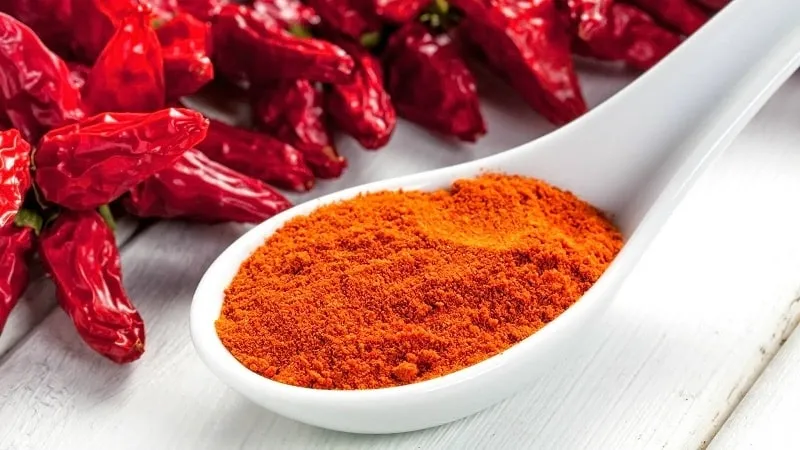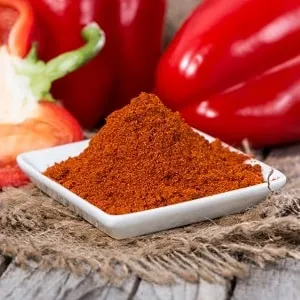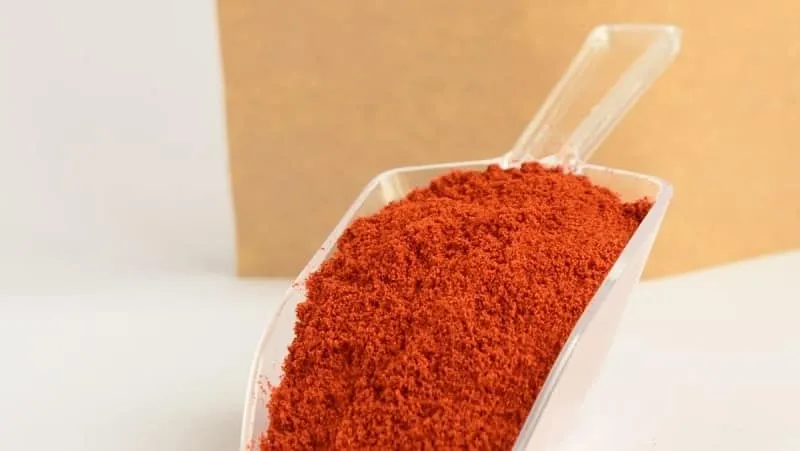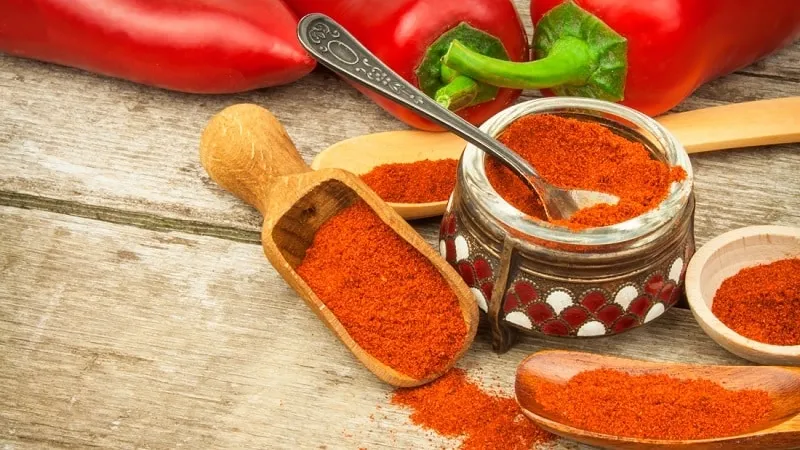We are used to calling the ground spice "paprika," which is sold in the spice section, while the mention of bell pepper brings to mind sweet, fleshy fruits with a distinct aroma.
For many, red pepper is associated with long, fiery pods. What is the difference between them, and is there any? In this article, we will discuss the types of peppers, their health benefits, potential harm, and what determines their spiciness.
Table of contents
The Origin of Paprika
What is paprika? The plant has several other names: Hungarian, bell, or sweet capsicum pepper.
It arrived in Europe thanks to Columbus, who initially set out for India in search of black pepper but ended up on the shores of Central America. After tasting the fiery pepper, the explorer decided it could serve as a substitute for black peppercorns, which at the time were worth their weight in gold.
After Columbus returned to Spain, monks took over the cultivation of the plant. To turn the fruits into a spice, they were collected and dried using smoke from fires. The pepper thus acquired a smoky aroma and flavor.
In other European countries, the pepper was dried differently. The fruits were laid out on large trays, slightly dried, then strung on jute ropes and hung to dry under the sun.
Note. Modern production uses large fans, significantly reducing the time needed to produce the spice.
The name "bell pepper" was given to paprika thanks to Bulgarian breeders. Using the vegetable Columbus brought, they developed another variety with thicker, sweeter flesh and no spiciness. From Bulgaria, the pepper spread to Southern Europe. By the 17th century, it was actively cultivated in warm climatic zones.
Over time, new varieties emerged that could tolerate colder conditions. In Northern Europe, paprika is grown in greenhouses. The crop is undemanding in terms of growing conditions, though it does need sufficient sunlight. Nowadays, this is achieved using artificial light sources.

Health Benefits
Paprika is an exceptionally healthy vegetable with a unique set of vitamins and minerals. In 1937, Albert Szent-Györgyi (a Nobel Prize laureate in Medicine) discovered an abundance of vitamin C in paprika while researching its potential negative effects on the human body.
As it turned out, the vegetable contains five times more ascorbic acid than lemons. In 100 g of paprika, there is 150 mg of vitamin C, while the daily requirement for humans is 60 mg. Moreover, overdosing is impossible—excess amounts are excreted in urine.
 In addition to ascorbic acid, paprika contains:
In addition to ascorbic acid, paprika contains:
- vitamins A, B1, B3, B2, B6, B5, B9, E, K, P, C;
- zinc;
- iodine;
- phosphorus;
- iron;
- calcium;
- sodium;
- potassium.
Regular consumption of sweet red pepper leads to:
- boosted immunity;
- overall health improvement;
- better blood test results;
- strengthened cardiovascular system;
- improved digestion and nutrient absorption;
- reduced risk of cancer;
- normalized metabolism;
- enhanced vision (especially for myopia);
- increased endorphin production (beneficial for stress, depression, and fatigue);
- better memory;
- stronger hair and nails;
- reduced excess weight and swelling;
- improved bone health in osteoporosis;
- regulated blood pressure.
Paprika contains capsaicin, which thins the blood and reduces the risk of blood clots. Fiber helps eliminate toxins, improves intestinal motility.

Types of Paprika
Paprika varieties differ in fruit shape and spiciness. The heat level depends on the capsaicin content. Hot peppers contain about 1% of the substance, while sweet ones have 0.01%.
For example, in Hungary, the vegetable is divided into seven types, all under the general name "paprika":
- noble sweet – dark red with a delicate aroma;
- delicate – slightly spicy;
- mild – non-spicy with a pleasant taste;
- semi-sweet;
- rose – medium spiciness, pale red with an intense smell;
- yellow – with a fiery taste;
- special sweet – red.

Contraindications and Potential Harm
Paprika is not recommended for:
- kidney and pancreatic disorders;
- gastritis;
- inflammatory gastrointestinal conditions;
- ulcers and erosions of the stomach and duodenum;
- angina pectoris;
- allergic reactions;
- colitis;
- myocardial ischemia;
- tachycardia;
- high stomach acidity.
What Is Red Pepper?
Hot red pepper originates from America. It is the same plant brought by Spanish sailors who initially sought Indian spices but ended up discovering a new continent.
The shape is not as varied as that of sweet peppers. Typically, the fruits are round or elongated. The color ranges from yellow to red or dark olive. In Europe, red peppers resembling small trunks are most common.
The crop thrives in sunny and warm conditions. The ideal environment is a greenhouse. If desired, the plant can also be grown indoors on a windowsill.
Capsaicin gives the fruits their characteristic fiery taste. The more of it, the hotter the pepper. The fruits contain:
- carotenoids;
- calcium;
- fatty oils;
- sulfur;
- iron;
- B vitamins;
- ascorbic acid.
Thanks to its rich chemical composition, red pepper has a powerful effect on the body and enhances the effectiveness of medications.
Hot pepper is contraindicated for people with heart, kidney, liver, or gastrointestinal disorders.

How Paprika Differs from Ground Red Pepper
Are paprika and red pepper the same thing? Our answer is yes! Both spices are made from the same plant. The difference lies in the heat level. Sweet paprika is mild or slightly spicy. After drying, the pepper is ground into powder or flakes. The spice's taste depends on the drying method.
Smoked paprika is available, offering a distinct aroma. Often, ground sweet pepper is mixed with hot red pepper to enhance flavor and add a kick.
Ground red pepper is made from hot paprika. The spice is used in cooking, medicine, and cosmetics.
What’s the Difference Between Paprika and Bell Pepper?
Bell pepper, sweet pepper, and paprika are all names for the same plant. "Paprika" in Hungarian simply means "pepper." There are many varieties worldwide, differing in color, shape, size, taste, and spiciness.
In Europe, the most popular is the bell pepper with thick skin and flesh. In Italy, the sweet Peperoncino or Cubanelle varieties are preferred, with thin skin and a fragrant aroma. Spaniards love the spicy Piquillo (cone-shaped) or sweet Pimiento with a delightful aroma and thin skin.
Note. All paprika varieties are suitable for making ground spice or flakes.
Paprika Substitutes
If we’re talking about paprika as a spice, it can be replaced with ground red or cayenne pepper. However, the quantity must be adjusted, as these spices are much hotter.
Sweet paprika powder is usually mild. When buying packaged spice, check the ingredients—some manufacturers add hot pepper for extra flavor.
Regular ground spice can be replaced with smoked paprika flakes. Alternatives include cinnamon, nutmeg, black or allspice, and curry seasoning.
Conclusion
To understand the difference between paprika and ground red pepper (if we’re talking about spices), just taste them. Sweet paprika is aromatic and barely spicy, while ground red pepper has a burning taste.
That’s where the differences end—both spices come from the same plant, with varying heat levels but identical health benefits. This applies to both fresh and dried fruits.







